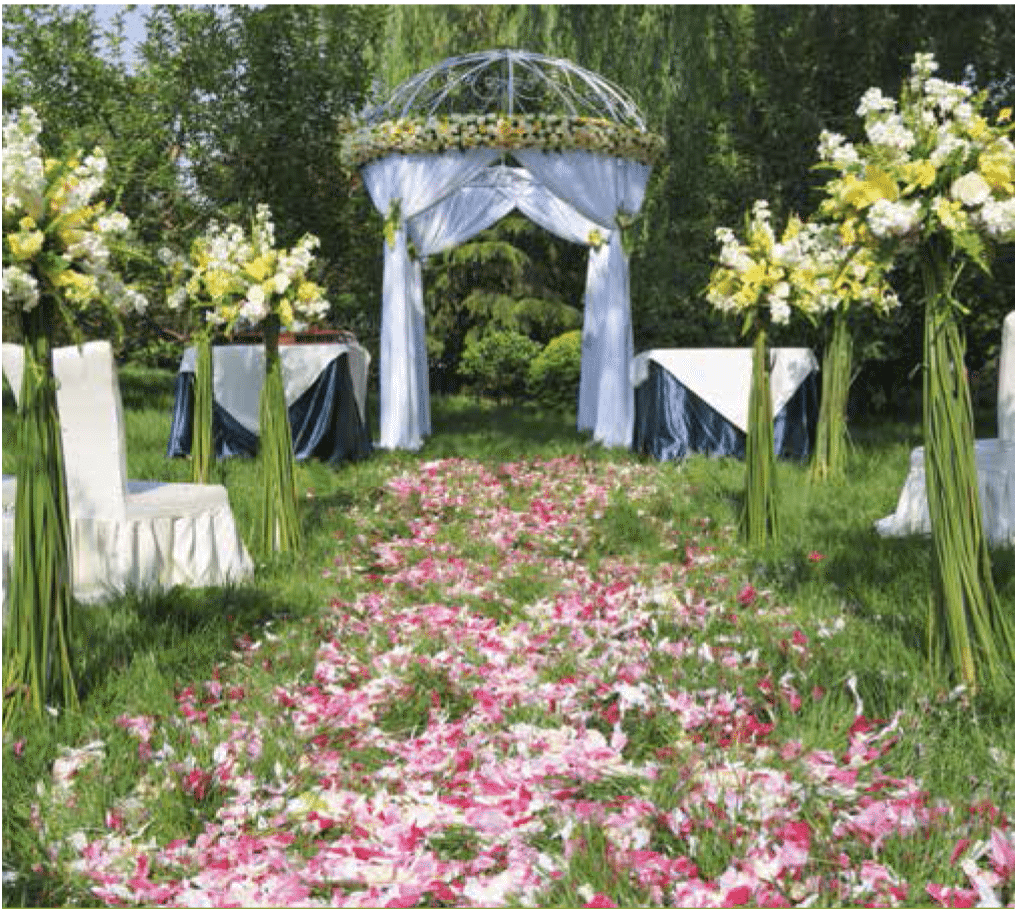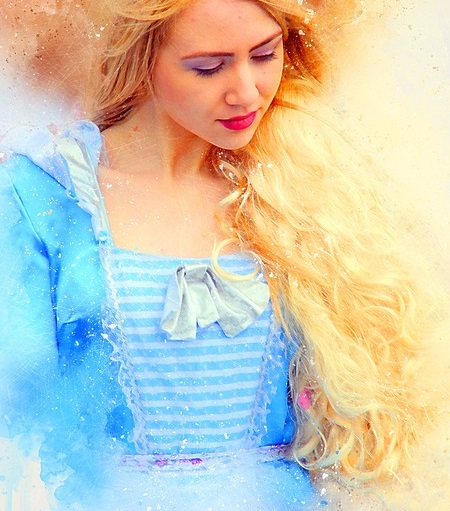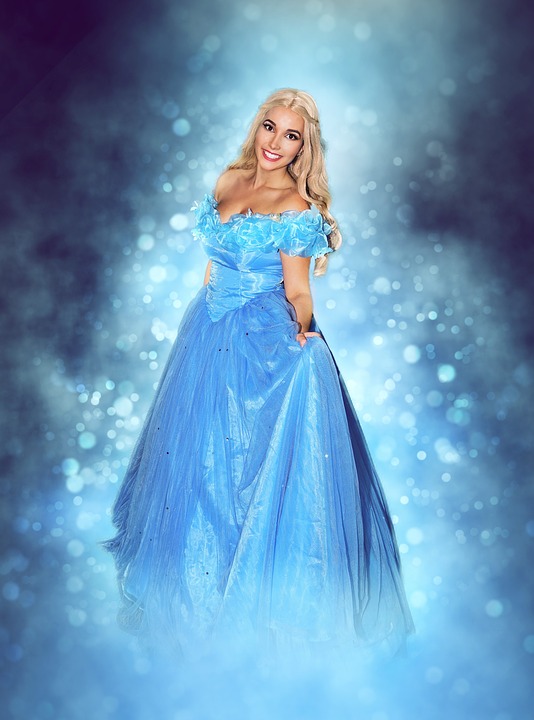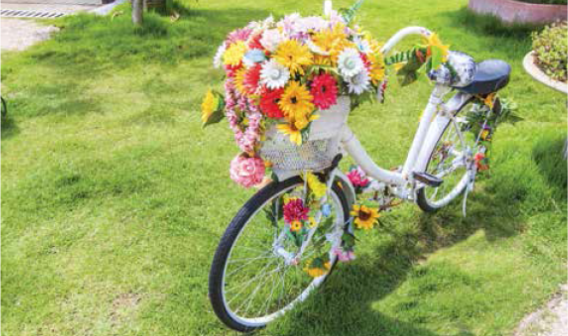WE HAVE lost many old Irish wedding traditions over the centuries, as other cultures have barged in on us.
There are many gorgeous Irish wedding traditions that have fallen by the wayside. Some of them are so sweet and so layered with historical meaning that it would be a shame for them to fade into the mists of distant history. So I’m here to remind ye’all about them and to shake them back into life.
The Home Wedding
Around the 1560s, the Catholic Church in Ireland sought to make marriages in Ireland more formal. Up until then, many couples chose to wed at home. They even christened their children at home. This was when brehon law was still largely in effect, and the marriage would be arranged through the local brehon or other qualified person. But once the church started to meddle, things began to change.
The Tametsi decree of the Council of Trent was introduced, as the church fought to push their ideas onto Gaelic people. This decree stipulated that any marriage that took place outside the presence of a parish priest or his representative and two witnesses would be null and void. So more or less: marry in a house of God, by a priest, or it’s not legal.
Of course, Irish Gaels largely ignored this for several more centuries, thanks in part to a 1653 statute authorising civil marriages. This was popular with Irish people, as it safeguarded property rights and separated the church from the more practical aspects of a legal union. So people didn’t need the “protection” of a church wedding: secular laws already protected them. Irish people carried on doing what they were doing. Even up until the 1900s, a wedding at home was more common than a church wedding.
Home weddings were ultra-stylish. According to etiquette books of the day, an arch of flowers should be placed in the drawing room. The sweethearts getting married were to stand under it. The bridal party then entered and joined the bride and groom. After the marriage took place, the bride and groom then turned and faced the room to greet their guests and receive congratulations.
 Let’s bring back the fashion of having a wedding at home. If you have a nice garden, use it!
Let’s bring back the fashion of having a wedding at home. If you have a nice garden, use it!
These days, getting the church you want, on the date you want, is becoming mission impossible. And if you aren’t sucking up to your church on at least a bi-monthly basis you won’t get priority when seeking to book the church. And we aren’t even all going to church anymore, so why are we insisting on having our weddings there? And the wedding mass is kind of boring. It drags on. And you can’t drink loads of wine in a church.
So let’s bring back the tradition of having weddings in our houses. It’s cheaper, less formal, we don’t spend any time on our knees, and we can drink wine. We don’t have to hire limousines, and get everyone to church and back again. Just don’t forget to invite me!
The Wedding Dress
This is going to floor you. Irish women didn’t marry in white fluffy meringue-like dresses until Queen Victoria made it fashionable in 1840. And even then the idea didn’t take off right away in Ireland. The fashion of a white dress did get a good foothold around 1900, however this was muted somewhat while the two world wars came and went.
Now, just about every bride is in white. It is amazing to think that the “traditional” white dress isn’t all that traditional. In fact it is a very recent English fashion, adopted by the modern Irish bride.

Up until even 100 years ago, Irish women had a special gown made for their wedding day, but it was of any colour you could dream of. For example, in 1877, Margretta Adams married the dashing Robert Dunlop in the drawing room of the quite fancy Ashville House. She wore a glamorous tan gown made from poplin (a type of corduroy, would you believe).
Traditionally in Ireland, the bride’s wedding attire was much more sensible, in a good way. The wedding dress was typically a fancier version of everyday dress. In fact, women wore outfits that they could wear again as their Sunday best, or to other weddings. Some made dresses that could easily be altered (for example, by taking off extra frills) so they could be used for other life events, like christenings.
While white dresses did make their appearance known, they held no greater importance than dresses of any other colour. In fact, white dresses were considered appropriate for brides in mourning, as an alternative to wearing black on your wedding day.
So what colours did women choose? A bride from Kildare wore a red dress that looked like a fancy petticoat, trimmed in green ribbon. A lighthouse keeper’s daughter wore a stunning purple dress with black trim (all silk), so we can safely say that this adhered to middle-class fashion at the time. Another bride in 1874 from Drogheda wore a tan silk dress, trimmed in white frills, that went all the way to the floor. A farmer’s daughter around the same time wore a silk dress of blue and grey checks. Silk was very much in fashion at this time, but in 1912 one bride was daring enough to choose rayon!
The Blue Wedding Dress
Evidence suggests that for a period of time, Irish women preferred blue wedding dresses, and left white dresses to the upper-class brides. According to Críostóir Mac Cárthaigh, Archivist at the National Folklore Collection, UCD, there is a very old rhyme that backs this idea up:
Married in white, you’re sure to be right
Married in black, you’re sure to come back
Married in red you’ll wish yourself dead
Married in yellow, ashamed of your fellow
Married in green, ashamed to be seen
Married in brown, you’ll live in a town
Married in blue, you’re sure to be true
Married in pink, your spirits will sink.
And of course, most people observed the tradition of “something old, something new, something borrowed, something blue.” Art and fashion historian Sinéad Furlong-Clancy thinks it could be possible that blue wedding dresses were in fashion at one time. “Blue was long associated with purity and the figure of Mary.”

From 1850 to around 1880, the fashion for mauve wedding dresses hit the big time. A Belfast bride was reportedly wore a dress of dark purple silk and velvet in 1875. Lilac was also a big hit.
More modest brides chose other colours such as browns, greens and blues. But there were other choices too: in Coleraine in 1904, an upper-class bride wore a dress made from silver-grey cotton! A bride from Tyrone chose a brown gown, with beige accessories and a beige hat with show-stopping purple pansies on it.
Coffee-coloured fabrics became intensely popular after the 1920s. One bride from Skibbereen dressed her bridesmaids in very light colours, and wanting to stand out from them, wore a deep brown elaborate dress with bouffant sleeves noted as being “very much in vogue!”
Even when the war years came, the white wedding dress was still not necessarily the done thing. One bride, in 1914 wore a brown wool dress, trimmed with fur! Another from the Aran Islands wore a blue gown with white stockings and a big necklace. She had returned from America, were she had earned and saved some money, so this outfit was quite the big deal and seen as expressing the bride’s excellent taste.
I think it is time to revive this lovely Irish tradition of the bride wearing whatever colour she wants, in whatever style she wants! And to wear a dress than can be used for other events too…who needs a wedding dress sitting in a wardrobe for the next 50 years of your marriage (or uploaded to e-Bay in the event of a horrible divorce). I say, let’s go with a practical dress of any colour!
Guest Attire
These days, when you get a wedding invitation through the door, the first thought is, “I’ll have to buy new clothes and shoes!” But not so back in the day. The bride and the wedding party would don new threads, but not the guests. In fact, guests would turn up in their normal everyday attire. Even as late as the 1930s, a couple getting married were photographed in their wedding clothes, but guests looked like they were off to the market!
By the 1950s, however, this had very much changed and guests were expected to scrub up well. Etiquette books told people how they should dress at weddings. I like the idea of the wedding guest dressing up and the guests going smart casual. In fact I’d be happy to wear yoga pants, considering how much dancing goes on at the reception afterwards. Yoga pants for guests! Hooray!
Bicycle Weddings
From 1830 through until 1910, bicycles were an extremely fashionable way to get around. In fact, wedding guests often travelled by bicycle. Even the bride, groom, best man and bridesmaid would travel to the wedding on their bicycles!
The bikes would be decorated beautifully with flowers for the day. Bicycling veils covered the face, and then doubled as a fashionable veil once inside church. Parking in a church for a wedding is a modern-day nightmare. And if you want to sneak off early, you can’t, because 75 of your relatives have parked you in. Who needs it? NOT ME. I reckon bring back the Irish tradition of a bicycle wedding! It’s eco-friendly, cheap and very cute.

The Food
These days, if your wedding is in a hotel, there are no food surprises. Guests pretty much have a choice of the beef or the chicken. And while it is usually nice…it’s getting to be a bit of a snore. But back in the day, when people had their weddings at home, they also had their feasts at home. Friends, neighbours and family would bring dishes over, plus if you were wealthy enough, you could hire servants to help you cook the food.
In 1817, Thomas Wakefield married Mary Wilcocks, and their menu still survives. It consisted of turbot, calf’s head, beef, French beans, stewed sole, ham, duck, rabbit, giblet pie, potato loaves, pigeon pie, scotch collops, roast tongue, trout, and oyster pie. What the hell is giblet pie?
The wedding cake as we know it today is quite the modern invention. Usually a currant loaf was served instead, with the bride getting the first slice. Tipsy cake, a sponge cake soaked in sherry or whatever booze was to hand, was also common.
This is a lovely tradition to revive. Ditch the boring hotel meal, and let everyone bring along their specialty dish! This will add variety and interest to your menu. As long as you trust your inner circle not to sneeze on their contribution while making it.
Wedding Cake Slumber
According to custom, young unmarried maidens would nab a tiny sliver of the wedding cake to put under their pillows. They would them sleep on them that night, and the cake would supposedly induce intense dreams about their future husband. Their future husband might even introduce himself in the dream! In this way, when the young maiden met ‘the one’ in waking hours, they would know him right away. Maidens made sure that they didn’t miss out of that all-important piece of cake!
This tradition is actually very old in Ireland, and before wedding cake of an elaborate nature became common, the “bride’s cake” was a wheaten bannock (a buttermilk bread). I think this is a lovely gift for ALL singles at a wedding— a slice of wheaten bannock to sleep on that night in a pretty, greaseproof bag. And, if you get hungry around 3am…it can serve as a nice snack, saving you the job of going to get chips in the freezing cold.
Leap Year Goodies
The Irish tradition whereby young ladies could propose to a man, but only on the 29th of February in a leap year, is well-known. In fact this was once enshrined in law. But you may not know that a girl whose proposal was rejected had the right to compensation!
At first, a lovely silk dress presented with a decent apology, would compensate the girl. But through the ages, this became a luxurious fur coat. Well-to-do young men started to fear the 29th of February on account of several young women on the hustle. They learned to get out of dodge on that date! Maybe we should skip the revival of this tradition, especially as these days fur coats come with their very own protesters!
Originally published on www.oldmooresalmanac.com

